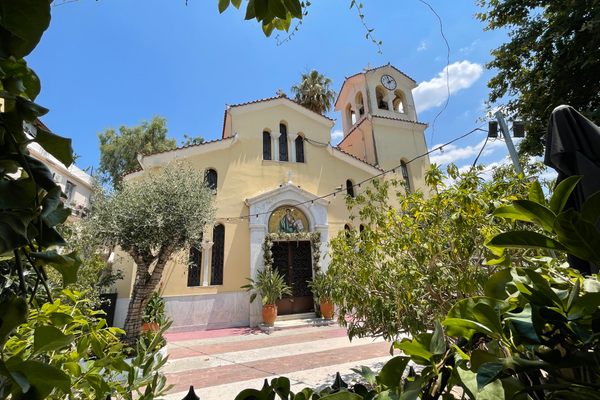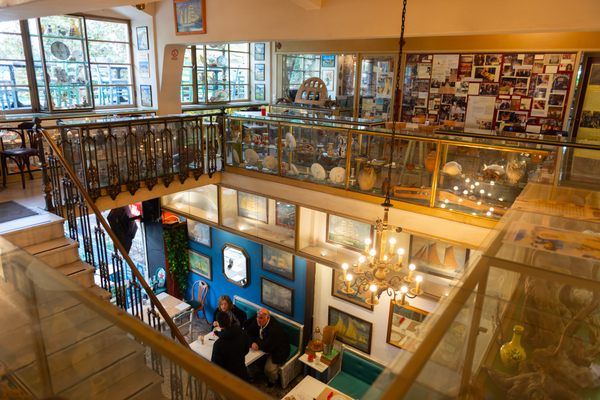The Athenian Agora
This ancient Greek place of assembly and marketplace is being revealed layer by layer below the modern Athens cityscape.
Lying right beneath the northern slope of the Acropolis is the ancient Athenian Agora. Walking through the Agora takes the visitor back through the place where Athens’s mighty heart once beat.
Literally meaning “marketplace,” the Agora was the economic center, where the wealth, reach and influence of classical Athens was visible by the wide range of goods shipped in from the nearby port of Piraeus, which ranged from wheat produced on the shores of the Black Sea to precious dyes from the Levant.
But what marked the Agora with everlasting glory was the other commodity traded and peddled daily: ideas. The Agora was the meeting grounds and hang out spot for ancient Athenians, where members of the elected democracy assembled to discuss affairs of state, noblemen came to conduct business, ordinary citizens got together to meet up with friends and watch performers, and where the famed philosophers doused their listeners with wisdom (or rubbish).
The Agora also played serious a role in religious festivals. The architectural layout of the Agora was centered around the Panathenaic Way, a road the ran through the heart of Athens to the main gate of the city, the Dipylon.
The road was sacred, serving as the travel route for the Panathenaic festival, held in honor of the city’s patron goddess Athena every four years. The Agora was also home to the Temple of Hephaestus, the Greek god of craftsmen and metalworking. It was thought for many years to be a temple dedicated to Theseus, the founding mythological hero of Athens, but this turned out to be wrong. The temple is still visible in great condition, and is one of the best-preserved classical temples in all of Greece. Other temples formerly standing at the Agora include temples dedicated to Zeus, Athena, Apollo, and Ares.
Notable buildings include the city’s arsenal, the Tholos (where the city’s elected generals lived on the public’s dime) and the numerous stoas- Stoa Baileios, Stoa Poikile, and the Stoa of Attalos to name a few.
Stoas were massive covered porticos designed for public usage, where merchants could sell their goods and where people could catch some shade on a scorching summer day. The Stoa of Attalos was rebuilt in the 1950’s and houses both the Agora Museum and the storage and conservation facilities of the Agora’s ongoing archaeological excavation.
Most of what’s visible and known of the Athenian Agora was a mystery until excavations by the American School in Athens began in 1934. Much of the site was actually covered by a refugee camp made up of Greeks who fled Turkey during the events following the collapse of the Ottoman Empire.
The excavations uncovered most of the 30+ known major buildings from the ancient Athenian Agora, along with thousands of artifacts. Conservation efforts have restored thousands of pieces of pottery and amphora (the standard storage vessel of the ancient world), studied thousands of marble statues and reliefs, and analyzed the remains of human and animal bones to give us a better understanding of what life was like in the ancient Athenian world.
The excavation is ongoing, with a digging team made up of highly qualified students of classics, archaeology, and occasionally economics or oceanography present every summer to get their Indiana Jones on, most of which involves constant squatting in the hot Greek sun, pickaxing through layers of never-ending dirt, and sweeping all of the dirt and rocks away to reveal pottery, walls, bones, coins, but often…more dirt.
In the summer of 2010, the excavation tackled the Stoa Poikile, or the Painted Stoa. It was the hang-out spot of people looking to relax and watch fire-eaters, as well as a testament to Athen’s glory days, housing four famous (but now lost) paintings known throughout the ancient world: a battle of Theseus against the Amazons, the siege of Troy, the Battle of Oenoe (Athen’s first major victory over Sparta), and the Battle of Marathon (Athen’s victory that stopped Persian the advancing Persian army). The Painted Stoa was also the meeting place of the philosopher Xeno and his students, and it is from this building that his disciples derived the name “Stoics.”
Other sites to see in or around the Athenian Agora include the Church of the Holy Apostles (a Byzantine Church built around 1000 CE), the Roman Agora, the Areopagus (a hill where city affairs were managed prior to the democracy), the Pnyx (a hill where city affairs were managed once it became a democracy), the ancient cemetery at Keameikos, and of course the Acropolis.

























Follow us on Twitter to get the latest on the world's hidden wonders.
Like us on Facebook to get the latest on the world's hidden wonders.
Follow us on Twitter Like us on Facebook